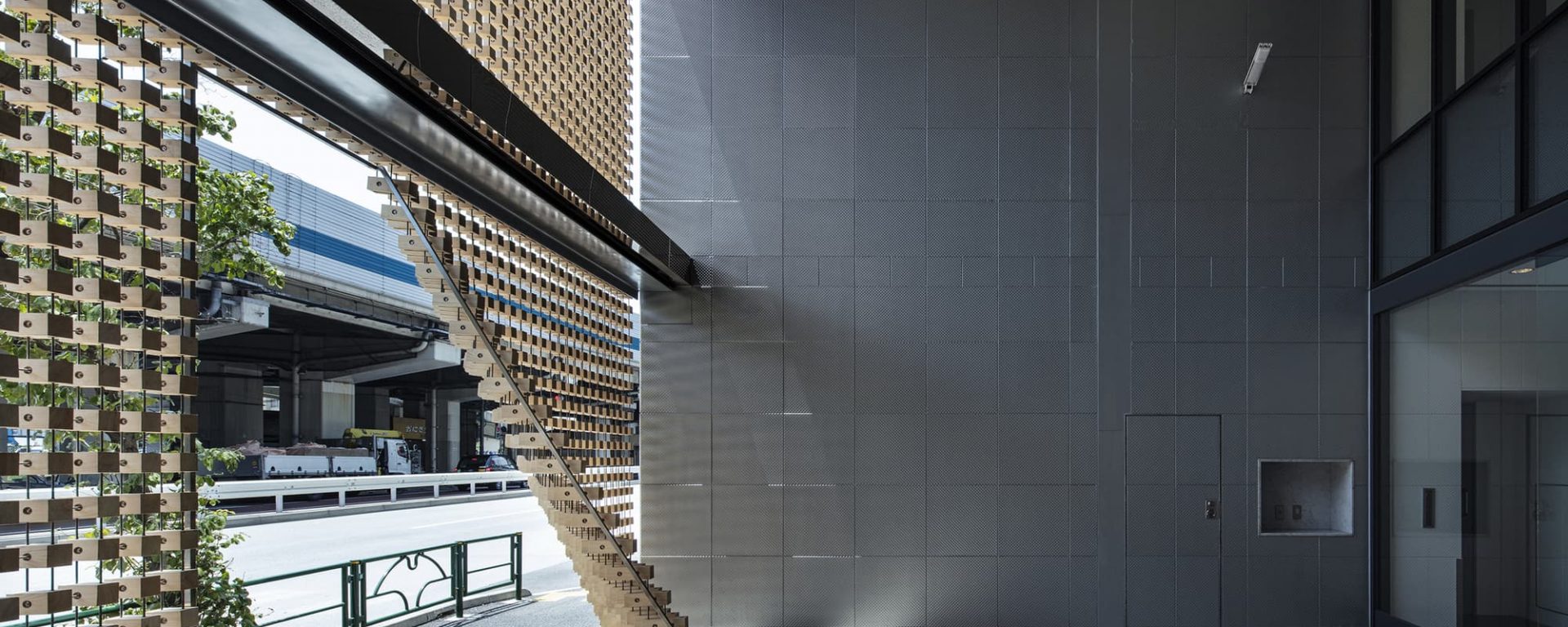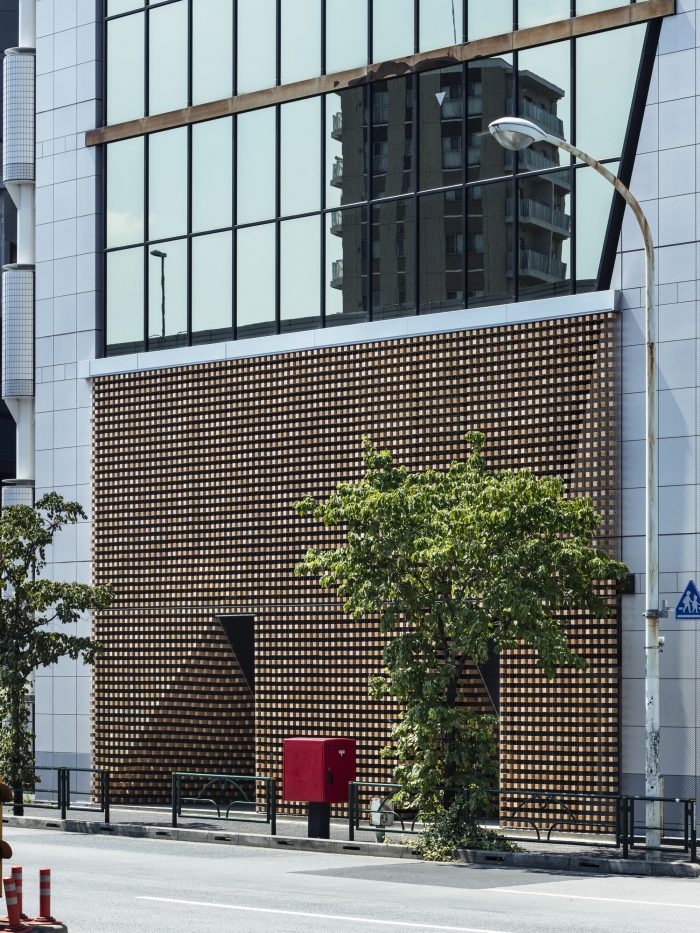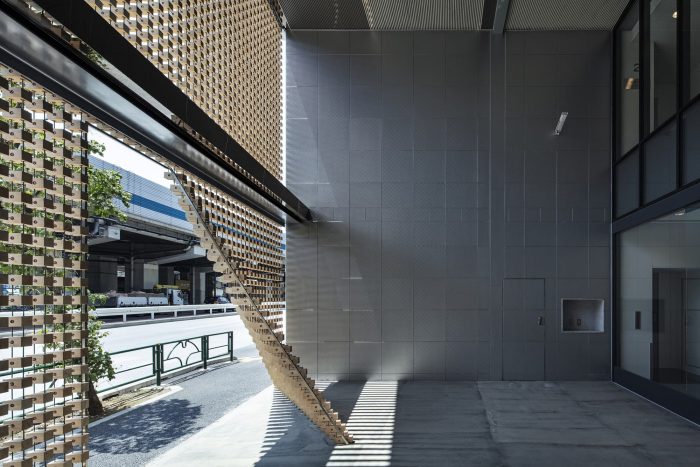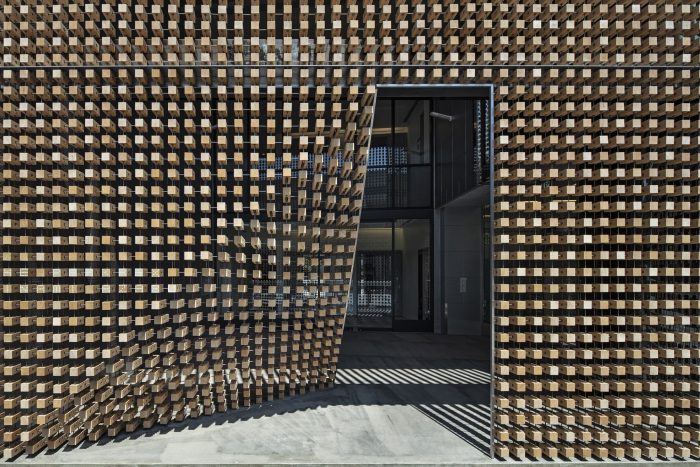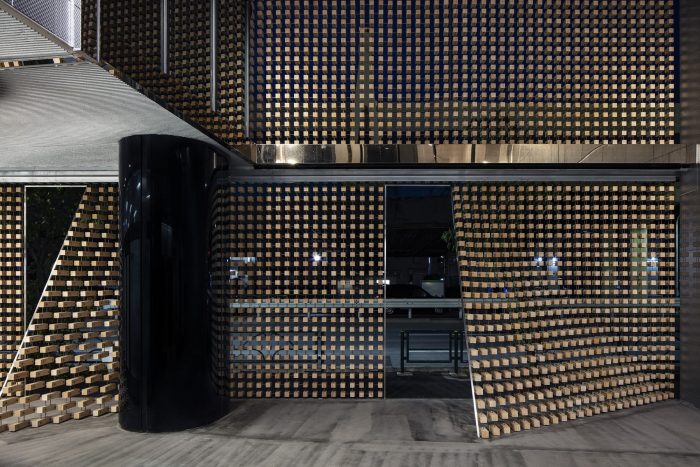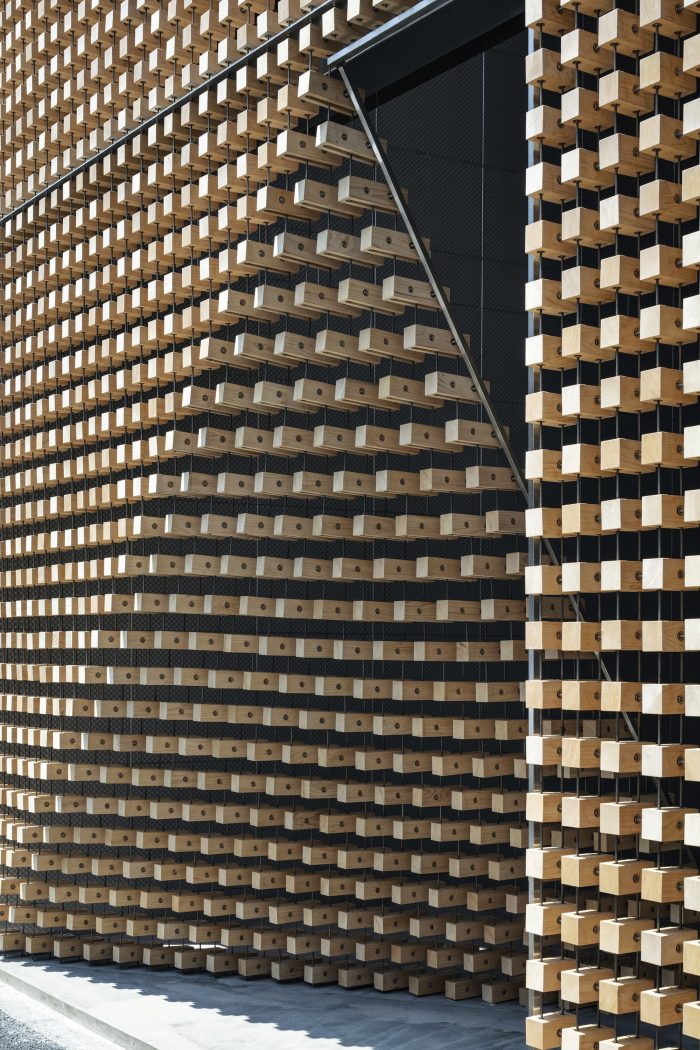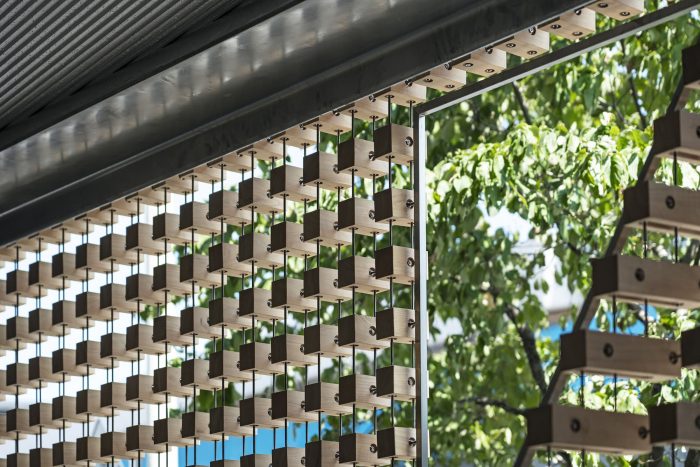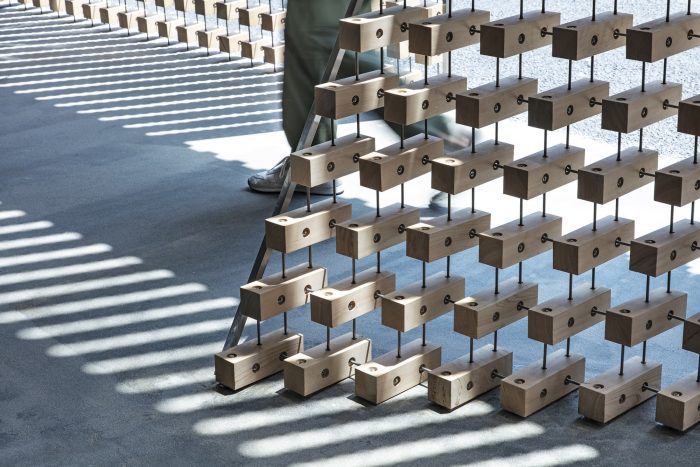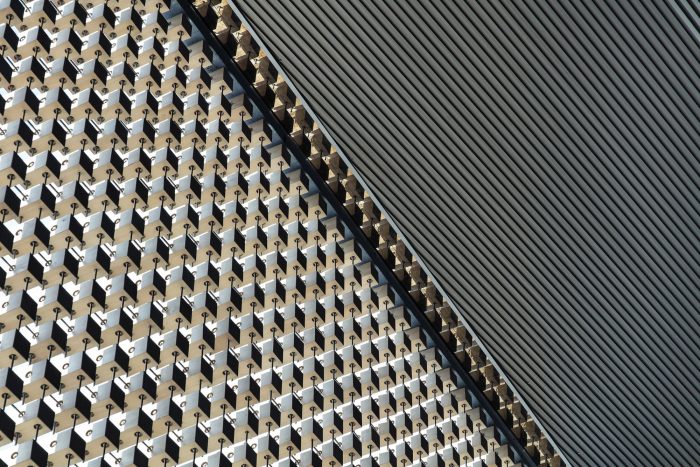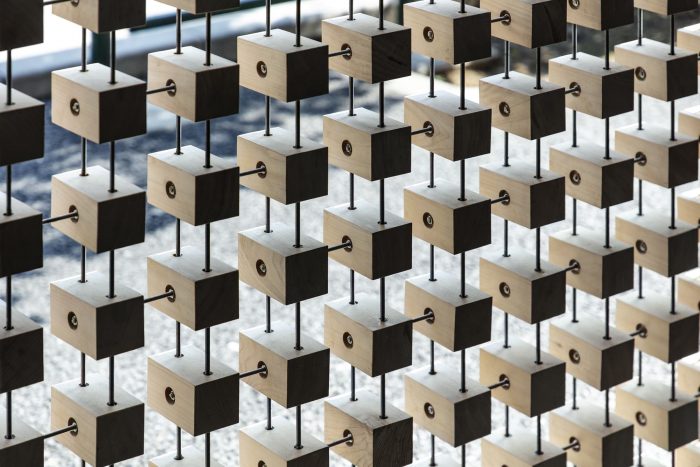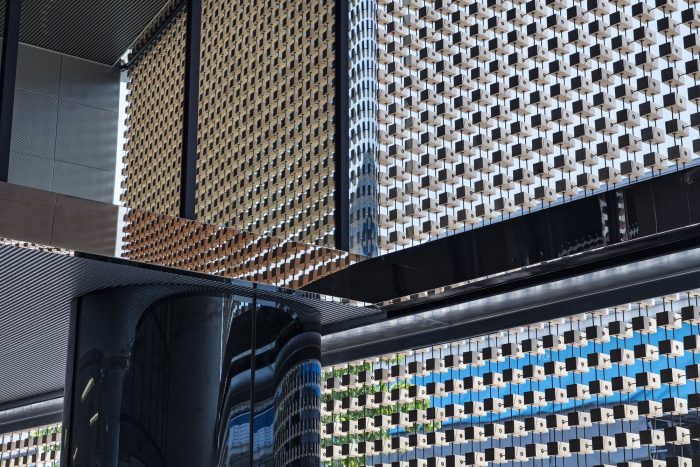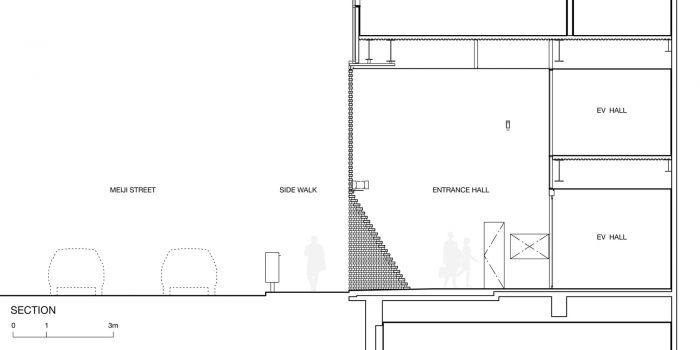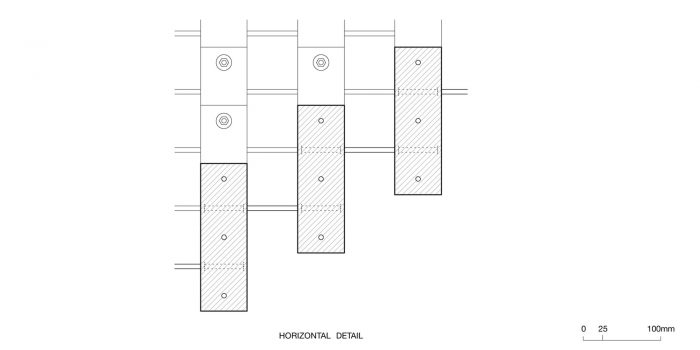这是一个综合大楼入口的改造项目。
现有的入口大厅由两层中庭组成,但玻璃隔断将中庭的内部和外部分开,中庭的空间变成了一半大小。然后,玻璃隔断后退到中庭的边缘,形成一个沿街的开放空间。 沿着明治街有一个屏风,以保护空间不受繁忙的交通和强烈的南方阳光的影响。
This is a renovation project of the complex building’s entrance.
The existing entrance hall consists of 2 stories atrium, but the glass partition divides the atrium inside and outside, and the atrium spaces become halfway size. Then the glass partition is setback to the edge of the atrium to have an open space along the street. And there is the screen along the Meiji street to protect the space from the heavy traffic and strong southern sunlight.
我们认为屏风应该与沿街的古老寺庙构成景观,而且不仅从外面,而且从里面也应该看到它的美感。该屏风由柏木和M6不锈钢棒组成。古老的寺庙里经常使用柏木,对汽车尾气有除臭作用。在垂直方向上,两行棒子穿透木材,水平的棒子连接每个柱子。这样的构图使它没有层次感,没有前后之分,有足够的强度来抵御风压,并向空间传递充足的阳光。
It is thought that the screen should compose the landscape with old temples, that is dotted along the street, and it should be seen esthetically not only from outside but also from inside. The screen consists of cypress lumber and M6 stainless rods. A cypress lumber is often used in old temple and has deodorant effect for the car exhaust. Vertically, two lines of rods penetrate the lumbers and the horizontal rods connect each columns. The composition gives it no hierarchal appearance, without front and back, and enough strength to resist wind pressure and transmits adequate sunlight to the space.
折叠的形状和精致的氛围使它像木材制成的窗帘。深度为100毫米的木材,根据眼睛的方向和与屏幕的距离,表现出不同的杆子。
The folded shape and delicate atmosphere make it like curtain made of lumber. The lumber of 100mm depth and less represented rods appear different according to the eye direction and the distance to the screen.
Architects: Tsukagoshi Miyashita Sekkei
Area : 51 m²
Year : 2020
Photographs :Kenta Hasegawa
Structural Design : yasuhirokaneda STRUCTURE
Project Management : Open A
Architect In Charge : Tsukagoshi Miyashita Sekkei
Country : Japan

